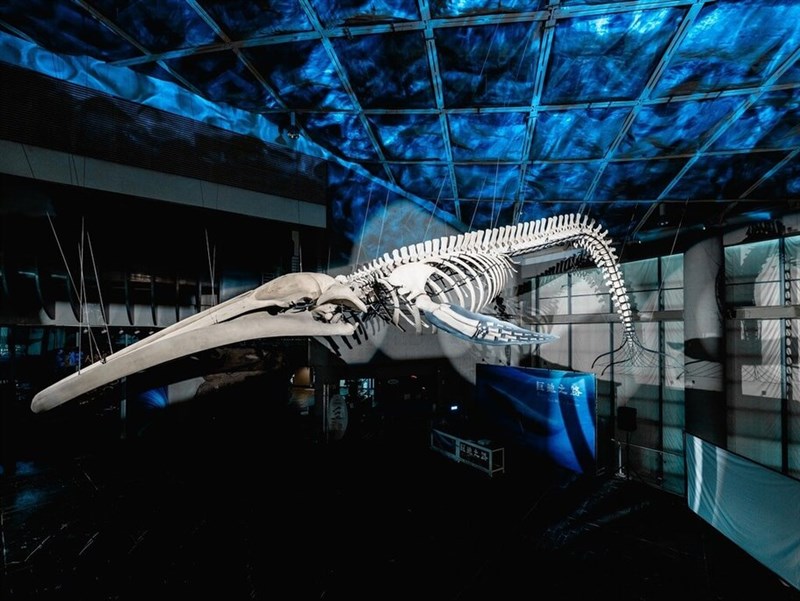
Taipei, Feb. 17 (CNA) The exhibition that debuted in Pingtung County on Dec. 15 featuring a blue whale skeleton marked a significant moment for Taiwan, aiming to promote marine conservation and enhance public knowledge about marine life.
The initial response to the showcase at the National Museum of Marine Biology and Aquarium in Checheng has been overwhelmingly positive, evident from the recent surge in visitor numbers. During the Lunar New Year holiday from Feb. 8 to Feb. 14, nearly 40,000 individuals flocked to the museum, more than doubling the typical weekly attendance in 2023, despite the region experiencing lower tourist footfall during the festive season.
Anticipation for this extraordinary display had been building even before its unveiling in mid-December. As only the 25th blue whale skeleton to be exhibited worldwide, the showcase left many attendees in awe, describing the experience as “remarkable” and “emotional,” according to museum reports.
Unbeknownst to most visitors, the exhibition, titled “Reborn: the blue whale’s journey,” was a monumental undertaking fraught with challenges. Beyond showcasing the skeleton of the endangered marine mammal, the exhibition narrates the poignant tale of Taiwan’s encounter with a young blue whale discovered stranded on the shores of Taitung County in January 2020.
Tragically, the juvenile whale was found lifeless on a beach in Changbin, entangled in buoy ropes. Weighing up to one ton and spanning 20 meters in length, the skeleton comprises a total of 63 bone fragments, as detailed by Chen Chi-hsiang, the museum’s director general.
The meticulous assembly of the bone fragments and the accurate positioning of the skeleton in compliance with scientific standards posed significant challenges. Chen revealed that the museum sought guidance from local and international experts, engaging in extensive discussions and evidence comparisons to ensure the precise reconstruction of the skeleton.
The youthfulness of the blue whale added complexity to the recovery process, necessitating gentle methods to minimize damage to the calf’s delicate bones. The museum painstakingly recreated the scene of the whale’s stranding, shedding light on the perils faced by other marine creatures in the same vicinity due to similar causes.
In a poignant display, the museum incorporated fishing lines and ropes that ensnared the whale’s mouth into the exhibit, alongside samples and specimens of other stranded marine animals collected by the Marine Animal Rescue Network. Highlighting the grave impact of fishing gear entanglement on marine mammals, the museum emphasized the importance of recycling such equipment to mitigate human-induced threats to marine life.
